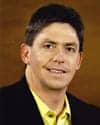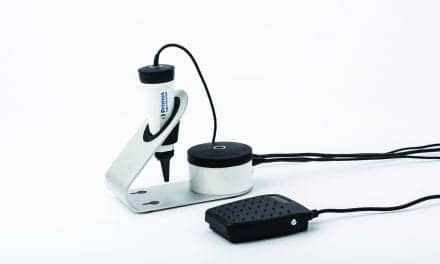Since its founding in 1904, Oticon Inc still holds true to its philosophy of “People First.”

The Web site of Somerset, NJ-based Oticon Inc’s Danish parent company, William Demant Holding A/S (WDH), features a picture of an antique hearing trumpet from about 1900 that resembles a long, curved smoker’s pipe. It was only a few years later on June 8, 1904, that William Demant’s father, Hans Demant, a representative for General Acoustics in Odense, Denmark, was inspired to found Oticon. His motivation was initially personal: His wife was hearing-impaired, and he was determined to help her and others with similar impairments.
Today, as Oticon celebrates the completion of its first century in business, the company has experienced enormous growth and change, and its hearing products—particularly its latest lines of digital instruments—are clearly situated on the industry’s leading edge, with nary an ear trumpet in sight. But the US company—in concert with its Denmark-based parent and its humanitarian-oriented Oticon Foundation—remains dedicated to a philosophy that originated with Hans Demant’s compassionate impulse and is emblazoned on all its sales literature: “People First.”
The words are not merely an empty slogan, maintains Gordon Wilson, Oticon’s vice president-marketing. Instead, they are part of the company’s operating strategy, helping to differentiate it from competitors. To begin with, although publicly owned—William Demant Holding has been sold on the Copenhagen Stock Exchange since 1995—the charitable Oticon Foundation possesses a majority share, fluctuating between about 60% and 65%. This means not only that the company, which also includes the Switzerland-based hearing aids manufacturer, Bernafon, cannot be acquired in a hostile takeover, but also that its majority owner is deeply committed to charitable works having to do with the hearing-impaired.
In contrast to Bernafon, a separate business unit that WDH acquired in 1995, Oticon is “very much an audiology- and people-oriented company” whose products and philosophy differ from Bernafon’s more technological bent, Wilson says. Central to what Wilson calls the “psycho-acoustical, audiological research” that goes into Oticon’s products is the work of its Eriksholm Research Center, established in 1977 at the site of an old manor house not far from Hamlet’s famed Elsinore castle.
Oticon’s literature states that Eriksholm’s purpose from the beginning has been “to learn as much as possible about the practical needs of hearing-impaired people in order to improve the fundamental performance of hearing aids.”1 In practice, the center has developed close ties to its hearing-impaired subjects, some of whom have worked with Eriksholm researchers almost since it opened and have remained committed to help Oticon in its push to come up with ever-better hearing aids.
Oticon’s “People First” philosophy has extended to its 100th anniversary commemoration in the United States. To mark this milestone, it has launched two public relations efforts funded through the Oticon Foundation. The first will provide pairs of its advanced digital hearing aids to 100 centenarians across the country. “Believe it or not, they’re streaming in” to the offices of hearing care professionals, Wilson says, adding that a 105-year-old Westfield, Mass, woman (almost all the applicants are women) had come in that very day to apply to get the hearing aid. “The idea is that you’re never too old to do something about your hearing,” Wilson says. Another program celebrating the company’s centenary will be providing $600 scholarships to 100 audiology students in the United States—50 students in 2004 and 50 in 2005.
But far more central to the company than these PR efforts to mark its first century are the product achievements that will launch it into its second. In the United States, as in the rest of the world, Oticon “has been at the forefront in creating audiologically founded, innovative hearing care solutions that deliver clear end-user benefits,” says Oticon President Mikael Worning, responding via email to questions posed by Hearing Products Report. “This is clearly shown in our impressive list of innovations, from the first digital hearing aid to our latest introduction, Oticon Syncro.”
Syncro and Oticon’s New Products Bonanza
Oticon bills Syncro as “the next dimension in digital hearing care,” “inspired by the human brain,” and possessing “an amazing ability to focus on voice regardless of the complexity of the sound environment.”2 It is the company’s first venture into using artificial intelligence to solve problems hearing-impaired individuals face in everyday situations, such as dining out at a restaurant, listening to television with the family, or enjoying music at home or in a concert hall.
“It’s the most advanced hearing aid available at the moment,” Wilson says. “The thing that is really exciting and new about the Synchro is its use of artificial intelligence. It can tell if there’s noise, speech, or a combination; what direction it’s coming from; whether the wind is blowing or not, and at what level it’s coming in.” Syncro uses the data “to make a decision at a particular point in time and adjust its noise management, directionality, and compression system,” the executive says.
With research and development representing a high percentage (about 8%) of the parent company’s revenues, Oticon has put a lot of faith in new product introductions, says Wilson, an Australian-born executive who was tapped for his current position in the United States about a year ago after working for Oticon in Denmark since 1991. “The company has a belief that there is a lot that can be done with the technology in the coming years,” Wilson says. “We have invested very heavily in R & D rather than spending on high distribution costs or lowering our costs of production.”
The heavy R & D investment has paid off in a string of new digital hearing aid launches. “All of our advanced products have been launched in the past 2 years, from the most advanced hearing aid available to the very high-value digital products,” Wilson says. “What we’re seeing is this is a product-driven business. If you want to be a leader, you have to be a leader in product development.”
Among some of Oticon’s other recent introductions are its more affordable digital entry, GO, launched in January; its mid-priced Atlas Plus hearing aid, also introduced in January, an improved version of its previous Atlas product that uses Oticon’s OpenEar Acoustics, a technology that addresses “the side effects of occlusion and acoustical feedback”3 and offers “a more natural sound at a more reasonable cost,” Wilson says; and Gaia, which also is built around OpenEar Acoustics, but sells at a higher price.
Syncro, which debuted at the American Academy of Audiology’s annual convention in Salt Lake City in April, has received a “huge response,” Wilson says. Recently, it received the 2004 award for “Excellence in Technology” among audiology and hearing aid technologies from industry consultants Frost & Sullivan. Oticon’s product achievements were previously recognized when it was named the grand prize winner of the 2003 European Information Society Technology Prize, for Adapto, the first fully digital hearing instrument that detected voice and gave it priority over other environmental sounds. Adapto was chosen over entries from 437 companies and 22 countries. The company received further recognition in 2003 for its overall business acumen when its parent, William Demant Holding, was named European Company of the Year, a prize previously awarded to BMW, Nokia, and Gucci—among others.

Less Structure, More Creativity
About 350 individuals work at Oticon Inc’s Somerset, NJ, operation, compared to about 4,352 worldwide, Wilson says. Although most Oticon products are manufactured in Denmark, a large segment of the staff at the Somerset facility are employed in custom ITE manufacturing, he says. Oticon products are sold through sales companies in 20 countries and about 80 independent distributors. Though tied to its European parent, the US operations have a high degree of autonomy, Worning told HPR in a previous story about Oticon.4
The “wall-less” office and all it implies continue to exist in Oticon’s New Jersey offices, as well as at Oticon headquarters in Denmark. “Basically, in the early ’90s, the company adopted what for the time was a pretty revolutionary management structure,” Wilson says. “We’re organized to get away from a very formal structure and tight job descriptions where people are boxed into categories. It’s not a top-down kind of industry,” he says. Although the US entity is “slightly more structured” than its European counterpart, he says, it is still modeled in the style of its Danish parent. Wilson credits this less hierarchal concept with “brewing up a lot of energy” at Oticon on both sides of the Atlantic.
In keeping with its “People First” philosophy, Oticon puts its efforts in the US market, as in the rest of the world, into making sure the hearing aids it develops suit the needs of those who use them. In addition to innovative new product introductions, it also strives to create strong partnerships with the hearing care professionals who work with hearing-impaired customers.
Oticon’s “value-added” services, which stem from having 60 audiologists on staff, also help differentiate it from competitors, Worning says. He points to such services as Oticon’s Human Link training seminars, which help hearing professionals employ user-friendly methods to achieve higher levels of client involvement and satisfaction. Other standouts, he says, include OtiKids, a support program to assist hearing care professionals in fitting children with hearing aids; and Client Assisted Product Selection, or CAPS. Wilson describes the latter as “a comprehensive counseling program designed to assist hearing care professionals in working with clients to select the appropriate hearing technology and manage expectations.” CAPS, he adds, involves training seminars and a reference tool to guide dispensers in the counseling process.
These and other support programs “typically attract professionals and enable us to work with the best possible customers in the profession,” Worning says.
US Growth Figures
In the United States, Oticon’s long-term goal, states Worning on the company’s Web site, www.oticonus.com, is “to become the US market leader in providing high-performance hearing solutions that reflect the most advanced technical designs, an understanding of human needs for people with hearing loss, and a dedication to the best customer service and dispensing systems.”
How close is the company to achieving this goal? “We’re not there yet,” Worning acknowledges. “But our strong sales growth in recent years indicates that we are on track to achieving this mission.”
The company’s North American sales increased in 2003, but weakened US and Canadian dollars against the Danish krone meant that the region’s share of its parent’s revenues fell to 36%.5 Although WDH does not break out Oticon’s US sales, Worning calls its growth in the last 5 years remarkable. “[It] has transformed the company by allowing us to do even more for our customers. We have revamped our entire business system, as well as expanding our facility to match demand.”
Along with the growth came a few growing pains, however, when Oticon Inc introduced a new IT system at the same time it installed a new telephone system last year. “There were some startup issues,” Wilson acknowledges, “but they’re all cleared up now.”
Wilson says the parent company is ranked second in the hearing industry in terms of revenues worldwide behind the Siemens Group, according to Stockholm-based Enskilda Securities. He declined to say where it ranked in the United States. WDH’s hearing-aids business, which represents almost 90% of its net revenues,5 was about 3.4 billion DKK (Danish kroner), or about $550 million (based on exchange rates in early May).
Looking toward the Baby Boomers
According to the Better Hearing Institute, a nonprofit organization that promotes hearing health and education, fewer than 20% of the estimated 28 million people in the United States with hearing loss have ever sought treatment or gotten hearing aids.6 For Oticon Inc, these statistics present both a challenge and an opportunity. With an estimated 78 million Baby Boomers entering or approaching their senior years, the number of individuals in need of Oticon’s wide range of high-tech hearing aid devices will inevitably increase.
“The Baby Boomer has been eagerly awaited by our industry for some years,” Wilson says. “There’s still not a large proportion in that age group who are buying hearing aids, but there are clearly a lot who will require them in the coming years.”
The marketing executive believes that Oticon’s emphasis on new digital hearing aid introductions and these devices’ availability in CIC configuration is likely to give Oticon an edge with Baby Boomers. “I think the technology is already here for this group, because if you look at the kinds of designs available…they will be able to have a significantly better hearing aid experience than 5 years ago.”
Still, Oticon and other hearing aid manufacturers are facing a major challenge in educating Baby Boomers and others who need hearing aids but are reluctant to get them, Wilson says. “I think manufacturers will have to rely on changing the perception of the device, since most Baby Boomers don’t have a favorable impression of them.”
To that end, the company is doing more to reach out to consumers—not only Baby Boomers, but all demographics—through the Hearing Industry Association, the Better Hearing Institute, and other such groups. It is also doing more to help its hearing care professionals promote themselves in local communities with both local and national ad campaigns. Some of the local campaigns targeting spouses, children, and other relatives of the hearing-impaired are very effective, Wilson says. “More often than not, it’s a family member who is dragging them to the hearing clinic.”
Wilson takes strong issue with an idea put forth by hearing aid activist Mead Killion in a recent Wall Street Journal article that hearing aids are too cost-prohibitive to appeal to the masses and that more inexpensive versions could and should be sold over the counter.7
“The correct assessment of the problem, deciding which device is right, and correctly fitting the device is not something that should be done over the counter,” he says. “It’s true that the cost [of some hearing aids] is high, but as technologies mature, prices roll down to a lower lever,” as they have with some of Oticon’s recent digital lines. But even these lower-priced models will need to be fitted by professionals, he adds.
As to future Oticon product introductions, Wilson foresees a very rosy picture. “We do not believe in any way, shape, or form that the current technology is as far as you can go.”
Ruth Stroud is a contributing writer for Hearing Products Report.
References
1. Eriksholm: The First 25 Years. Copenhagen: Oticon; 2002.
2. Oticon Syncro: Artificial Intelligence, the Next Dimension in Hearing Care. Copenhagen: Oticon; 2004.
3. Product information on Atlas Plus, Oticon Inc. Available at: www.oticonus.com. Accessed on May 1, 2004.
4. Wolski C. Oticon: putting people first. Hearing Products Report. March/April 2003:32
5. William Demant Holding Group, 2003 Annual Report. Copenhagen/Oticon/2004.
6. Better Hearing Institute Web site, www.betterhearing.org. Accessed on May 1, 2004.
7. Zimmerman A. The noisy debate over hearing aids: why so expensive? Wall Street Journal. March 24, 2004:7.





